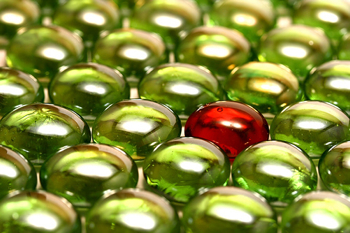 Who reads photography columns? People with more than just a passing interest in photography, that’s who. And since you’ve got this far, that definition includes you.
Who reads photography columns? People with more than just a passing interest in photography, that’s who. And since you’ve got this far, that definition includes you.
When you sit down and analyze it, in reality, you want to end up with photographs that others stand in awe of, that people want to copy, that people go “Wow! How did you get that?” and would be able to hold their own in any photographic competition.
It does sound as if you should be walking around every day, looking for the ‘scoop’ photo of the year. Of course, this may just be grandiose posturing on my part, remembering that despite the photojournalists creed of “f8 and be there” and the credo of the newspaper publishing business is, “News today, chip wrappers tomorrow.”
However, one type of photograph that never loses its appeal is one that shows the patterns in the everyday life around us. The eye is drawn to the pattern first, and then the brain recognizes what makes up the pattern. It is like finding a hidden object puzzle. It is really a psychological ploy – but believe me. It works to produce a memorable photo!
Never forget the effect of lighting in a photograph of patterns. Some good contrasty side lighting will emphasize the recurring shapes, to really push the point home. Sometimes it is the recurring shadows that produce the patterns. All it needs is for you to “look” and “see” and “record”.
However, if a photograph is to have lasting appeal, you have to combine something else with it. That something else is a discordance somewhere in the picture. Imagine a case full of oranges, the regular pattern of the oranges filling the frame, but one of the oranges is a green apple. Immediately the mind says, “Why?” and by doing that you have brought the viewer into your photograph. You have impacted on the viewer’s life. You have produced a photograph with “impact”. See once again how great shots are made, they do not just “happen”.
When I was involved in commercial photography, the team which would include art directors and the client as well as the photographer and assistant, would sit down and discuss the concepts to be presented photographically and then many hours would be spent on designing how to make the photograph “work”. This was long before anyone picked up a camera. Once the shot was visualized, the next job was to put it together and then see how it looked through the viewfinder. As I say many times, great shots are made.
So this weekend, keep your eyes open for repeating patterns – for example, the ends of blue plastic water pipes in plumbing supply shops and then work out how you can put an element of discordance into the shot. A yellow bucket hanging from the end of one tube perhaps? A cat sleeping in the middle of them all? A green frog? So it is difficult to train green frogs, remember that you can always purchase a toy green frog to use in a shot like this. Professional photographers do. Rub some oil on a plastic frog and sprinkle some glycerin drops on it and it will look real. I used to keep a complete wardrobe with replica animals for shots like that! One of my past photo-editors used to spend many hours poring over my photographs trying to work out which ones had real animals or otherwise (and that included fish).
But getting back to the patterns, this is really very much a visual exercise. You have to see it before you photograph it. It is an exercise in expanding your mind, your horizons and your imagination. It is also an exercise that does not need fancy photographic equipment to produce the spectacular end results. With producing successful pattern shots, even the simplest point and shooter will work. The magic is produced by your vision and nothing else.
So this weekend, pick up the camera bag and seek out some patterns, wait till the light is right and look for (or even add) that discordant image in the pattern. You will have produced a prize winner!
 |
 |
 |





